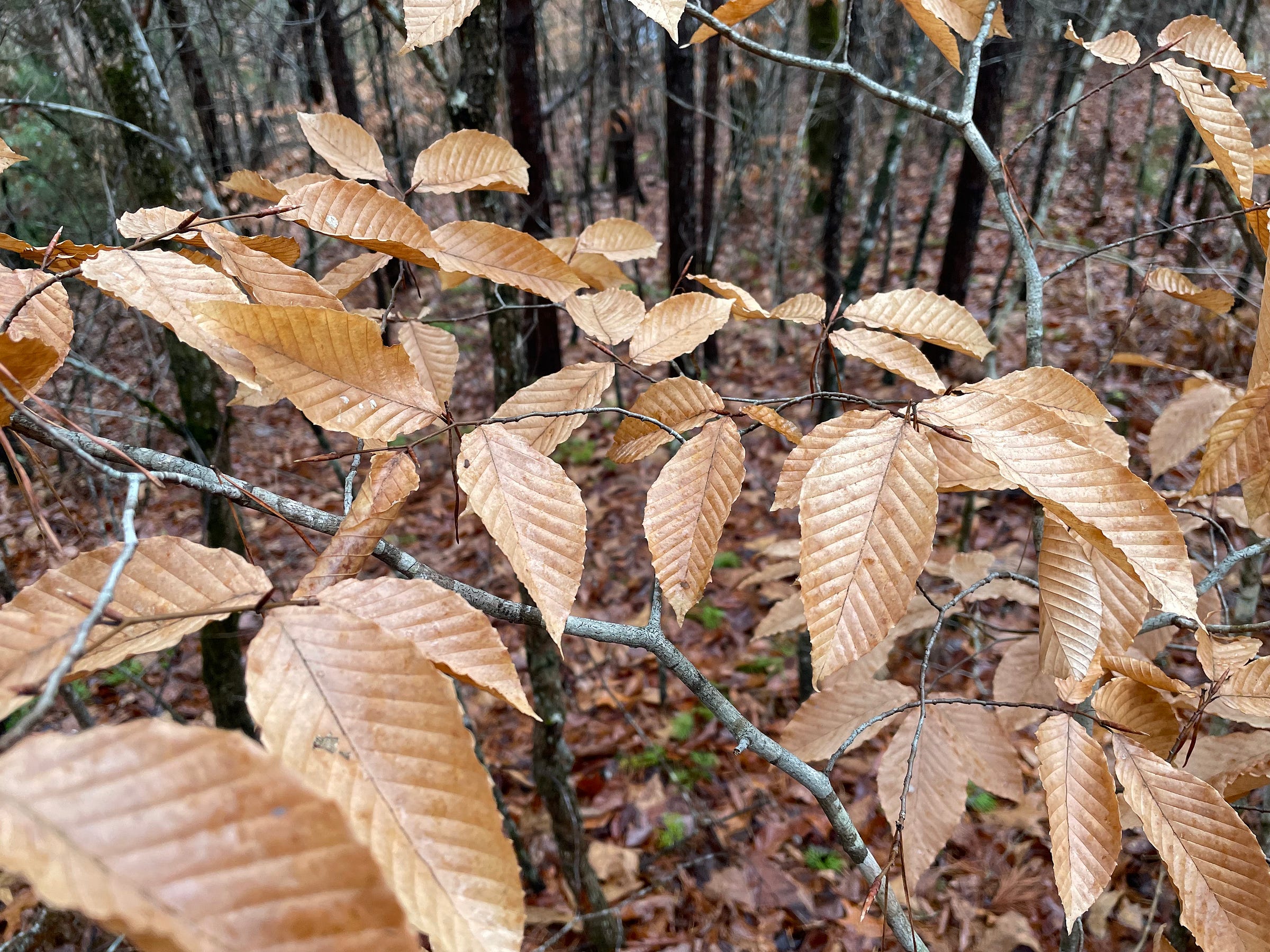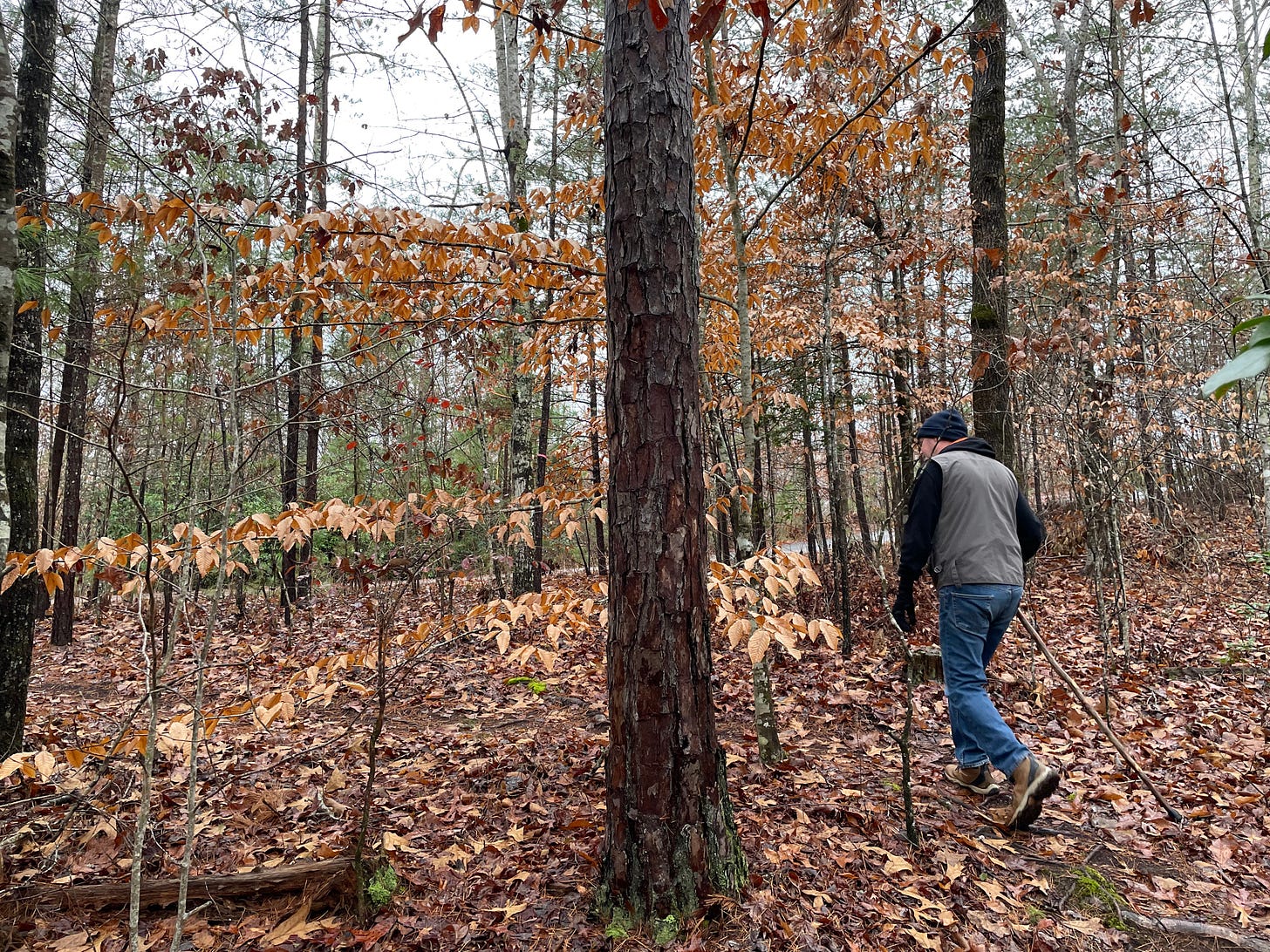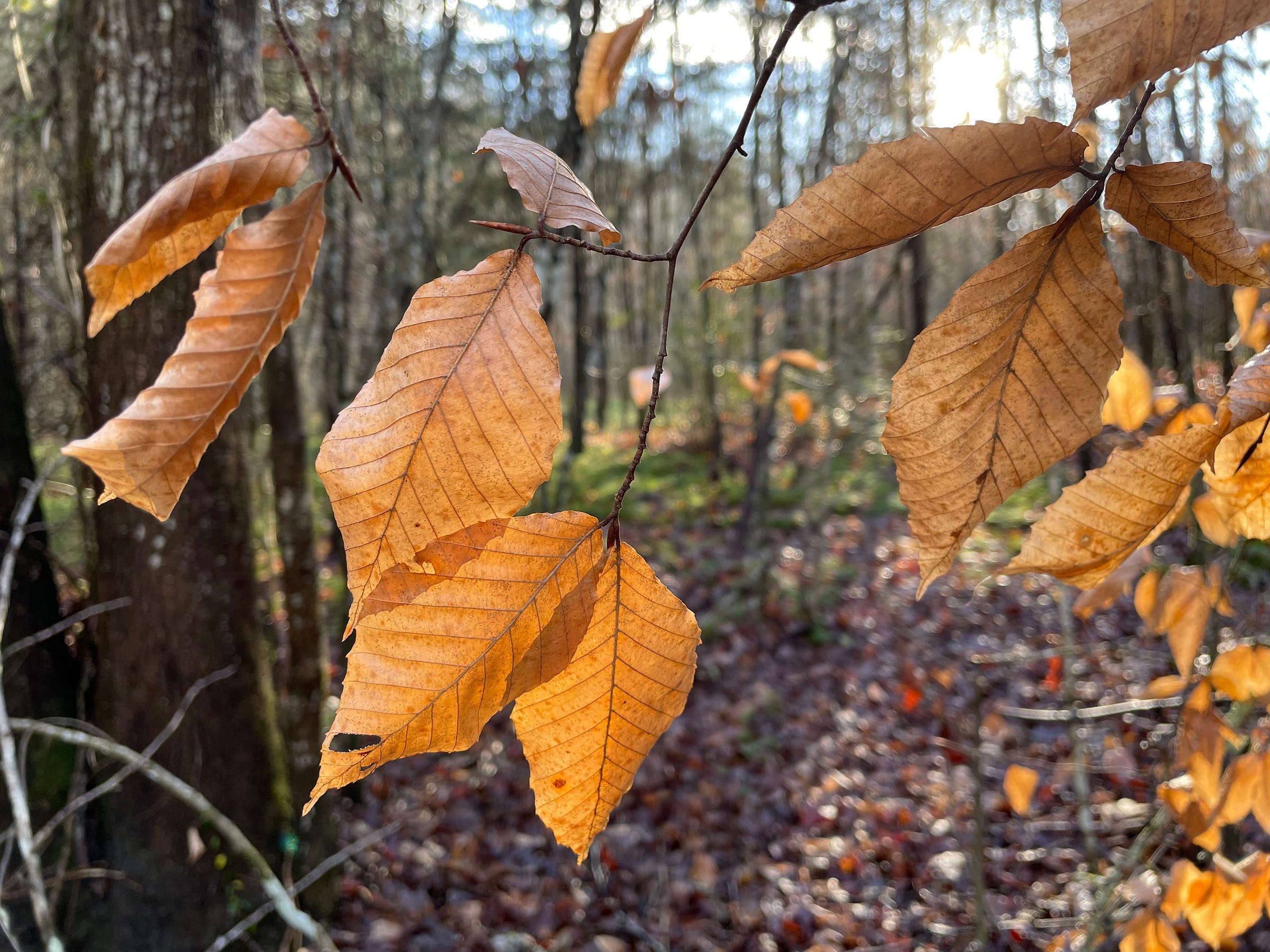Hello and Happy New Year to all you wonderful Rx Nature folks! How is 2025 treating you thus far?
If you’re reading this post in your e-mail, I hope you like our new banner up top. A nice, long holiday break gave me the free time to finally tackle some to-do tasks, and that was one of them. Fresh year, fresh logo, fresh look.
You’ll also notice something different at the bottom of this post: a notice about the expanded availability of my book, now in paperback/ebook/audible. Good Eye, Bad Eye debuted back in the fall, but I’m just now straightening out all the kinks of distribution. That, too, gobbled a lot of my time over the last two weeks. Mission accomplished!
Golden leaves
The other things on my mind this time of year are …. beech leaves. And the fine art of letting go. Which brings us to the title of this post.
Marcescence (mar-SESS-ents).
What a lovely word! Let it roll around in your mouth for a minute. Whisper it. Say it aloud. Maybe even sing it. There’s a melody there, don’t you think?
Behold these beech leaves, dancing in a winter wind, as they sing the song of marcescence.
Marcescence has a scientific definition, which I won’t bore you with. You can look it up. In essence, it’s the ability of certain plants and trees to hold on to their leaves long after all their neighbors have given up.
The surrounding forest is bare, cold winds are whistling, hibernating animals are deep asleep … but a marcescent tree will be holding onto its leaves for dear life. Like a stubborn kid who won’t give up his blankie to the inevitability of the washing machine.
Marcescent trees do this, supposedly, for several reasons (brilliant reasons!):
Deer and other browsers don’t like nibbling on twigs and tiny new leaf buds when scratchy old dry leaves are in the way.
When a marcescent tree finally drops its leaves in spring, that’s a rich source of fresh compost (aka food!) for the newly-budding-out tree.
That carpet of newly-shed leaves also suppresses springtime understory growth that would compete with the tree for space and nutrients.
Beeches aren’t the only trees that exhibit this botanical oddity. Several varieties of oaks do it, as well as hornbeams and witch-hazel. But let’s face it: Beeches have a leg (branch) up on all the others.
Beeches are the glimmering stars of the winter wood. When everything else has gone gray and the forest is a muted palette, beech trees wave for attention, their dessicated leaves glowing golden/bronze/amber.
A walk among beeches on a January day is an uplifting experience.
Beeches do one other interesting thing in winter: They shed some of their leaves, but not all.
Here’s “Beechie,” who lives in our back yard. (Yes, Jim and I are fond of Beechie. He stands alone at the edge of the treeline, as if he wants to be near us. So of course he deserves to have a name.)
Every year Beechie performs this ritual: When other deciduous trees start to shed their leaves, he does too. But only his top half. As fall slides into winter, Beechie’s upper branches are suitably bare. The bottom half retains its leaves, an orange-brown skirt that persists long past the last freeze date, when new leaf buds appear on the upper branches.
All of this begs the question: How does a beech tree know when to drop those last leaves … and which ones?
When is it time to let go?
Releasing into the fire
Yesterday I posed that question about letting go to a group of people gathered here at my place. They had come for a Silent Hike, which I lead every so often. (I wrote about Silent Hikes here and in a chapter of my book. Yesterday’s Silent Hike was No. 44 that I’ve led over the last decade.)
The afternoon was chilly so after our walk in the woods, we ladled mulled cider into mugs and clustered around a fire in my driveway. What we’re doing, pictured here, is writing down something—or somethings—we want to let go of as we move from one year into the next.
Shedding leaves we no longer need.
“Those dead leaves become a thing of beauty,” said my friend Eunice, who’s in that circle of chairs you see here.
Eunice is a therapist. She knows about loss, and helping people come to terms with it.
Perhaps we learn something from our dead leaves as we let them go, she told us yesterday. Our hurts help us help someone else. Our grief allows us to comfort each other.
After everyone had written something on their slips of paper, I invited them to commit them to the fire.
To let go of what needed to be let go.
The smoke carried their letting-go’s into the winter sky. Time to release old leaves, making way for something new.










So well said!
And, thank you for my first new word of the new year!
I forgot to mention earlier - I love your new design💚